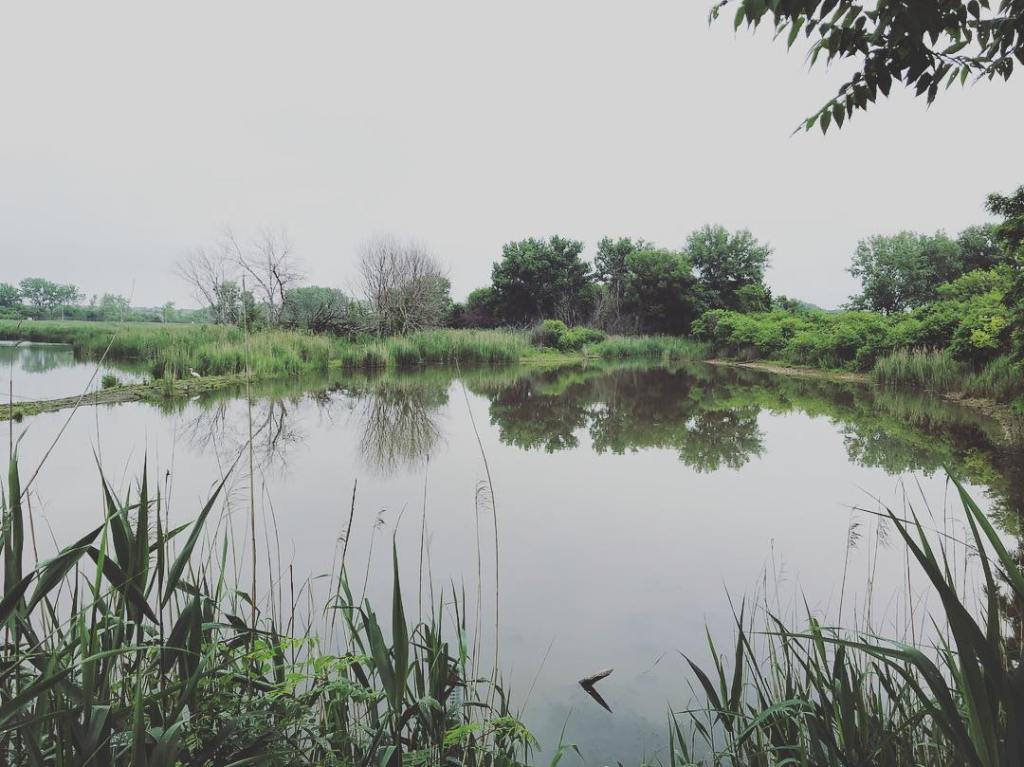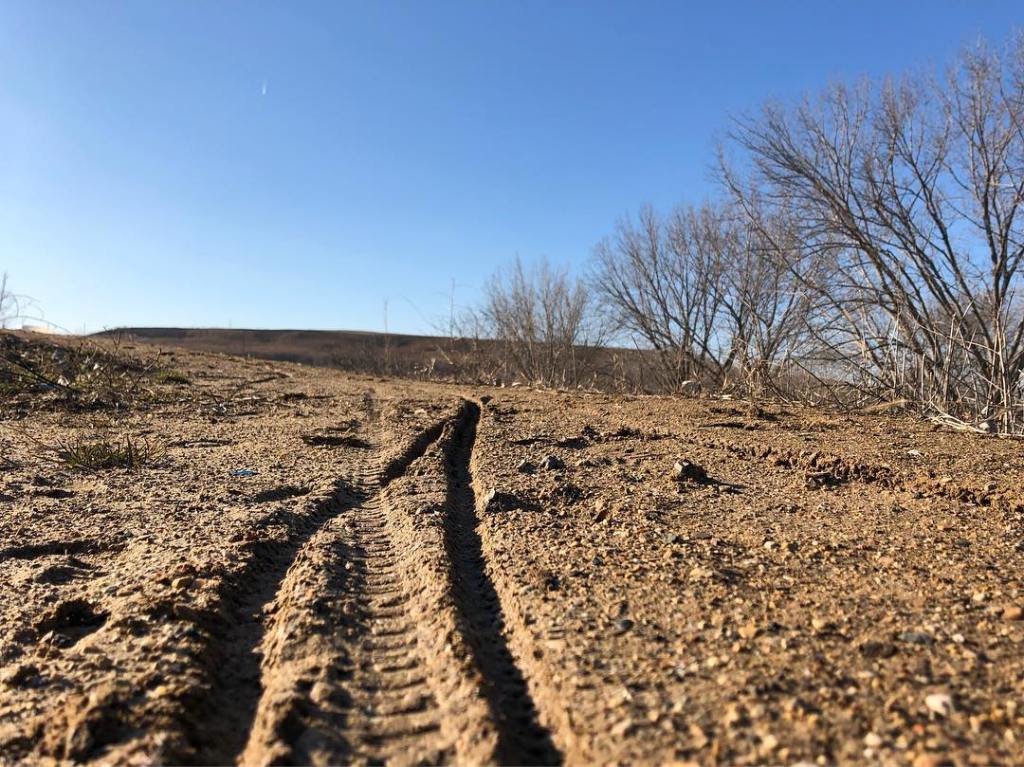What happens when people start dreaming around an old industrial site? Apparently, one of the biggest bike parks in the country.
Big Marsh is a steel mill turned bike park in the Southeast Side of Chicago. Located on 278 acres of open space, it is helping to contribute to the creation of an outdoor recreation hub just 25 minutes from the urban core of Chicago. This area has often been referred to as the “last wilds of Chicago,” which is exactly why we chose it as one of our Rewilding Projects, a long-term strategy to help provide millions of city dwellers with easier access to nearby outdoor places.
The idea of a world-class bike park started with SRAM, a privately owned bicycle component manufacturer based in Chicago. SRAM officials approached the Chicago Park District with a plan to build a place to celebrate two-wheeled recreation in the heart of the city. When the first location fell through, Big Marsh came into the picture.
“The property was a dump—they dumped slag from steel,” said Theresa Salus, the REI Outdoor Programs and Outreach manager for Chicago. “Once the steel industry ended, it became an easy local dumping ground. South of the site is an actual landfill.”

The process for turning the neighborhood’s unofficial dumping ground into a park was an impressive effort. SRAM, the Chicago Park District and a newly formed group called the Friends of Big Marsh got together in 2014 to raise money not only for a bike park, but also for a place where ecology was celebrated. The marsh, after all, is important for migrating birds.
“These were once wild spaces, then they became steel mills—it’s taken human help, but we’re rewilding them for wildlife habitats and urban outdoor recreation opportunities,” Salus said. It’s taken some hard work to revitalize the space, including creating ways for water to flow through the hemi-marsh, laying clay to cap the slag and adding a layer of black dirt to encourage growth of native species.
“This space, ruined by previous industrial activities, is being restored because it’s providing recreational opportunities,” said Randy Neufeld, director of the SRAM Cycling Fund. “The ecological restoration wouldn’t happen without the recreation. And the recreation makes sure that the ecology has a space.” Volunteers have been hard at work removing garbage, including a baby grand piano, destroying invasive species like buckthorn, and planting local vegetation.
The park places ecology at the forefront along with education and restoration. Part of the park plans includes the Ford Calumet Environmental Center, funded by a nearby Ford automotive plant. The center will serve as an education hub for anyone looking to learn more about the surrounding area’s ecology, as well as offering a bike shop and bike rentals. Not only that, the center is being built with a new type of architecture, one that uses only local, abundant materials and scrap, like salvaged steel from this industrial region and other remaining materials like slag, glass bottles and rebar. The project is looking to break ground this fall.
It hasn’t all been easy. The biggest roadblock for the Big Marsh project is the public transportation and cycling infrastructure. The park sits in the middle of an old steel mill and landfill, and the street infrastructure just isn’t conducive to bike access. Busy highways and overpasses are nearby, while bike lanes, bus and train stops are absent.

To solve the problem, Big Marsh is working to create a trail that connects West Pullman Park, which does have public transit options, to the park. We are supporting Active Transportation Alliance and their local community outreach and advocacy for alternative transportation options, including bike lanes and off-road trail development. There’s also a pilot project for a dockless bike program in the Southeast Side of Chicago—another potential answer to the transportation issue.
The park opened in November 2016, and the neighbors were intrigued. “I think the response from the community is curiosity,” said Chental Handy, project coordinator for Friends of Big Marsh. “Once they find out more, the community is often ecstatic at the fact that Big Marsh is such a huge project that’s right in the neighborhood.” Plenty of neighbors were involved from the beginning, and they attended public meetings and volunteered for trail maintenance, natural area restoration and garbage cleanup.
This Rewilding Project is far from over. As Big Marsh grew, the scope of the project grew too. There are four other past industrial lands in the neighborhood that will eventually all be connected by trails, bringing recreationists like climbers, paddlers and hikers into the Southeast Side of Chicago.
“In the media, you hear about the Chicago crime rates, but this certainly gives a very narrow view of the city. These are destinations where people can get outdoors,” Salus said. “Now you can rock climb on an old steel ore wall or bike on former industrial land. Hopefully people will think of taking a class with REI in the Southeast Side or going for a walk on their own. This land is part of our city.”
With the open sky above and brush and trail and trees surrounding you, you no longer feel like you’re in the city of Chicago. Come join us. The park is open from dawn to dusk every day and features:
- Multipurpose trails for biking, walking, running
- Tot track for the youngest riders
- Small pump track
- Large pump track
- Jump lines
- Flow trail
- Singletrack trails
- Cyclocross course, including Belgian stairs
- Natural area improvements


